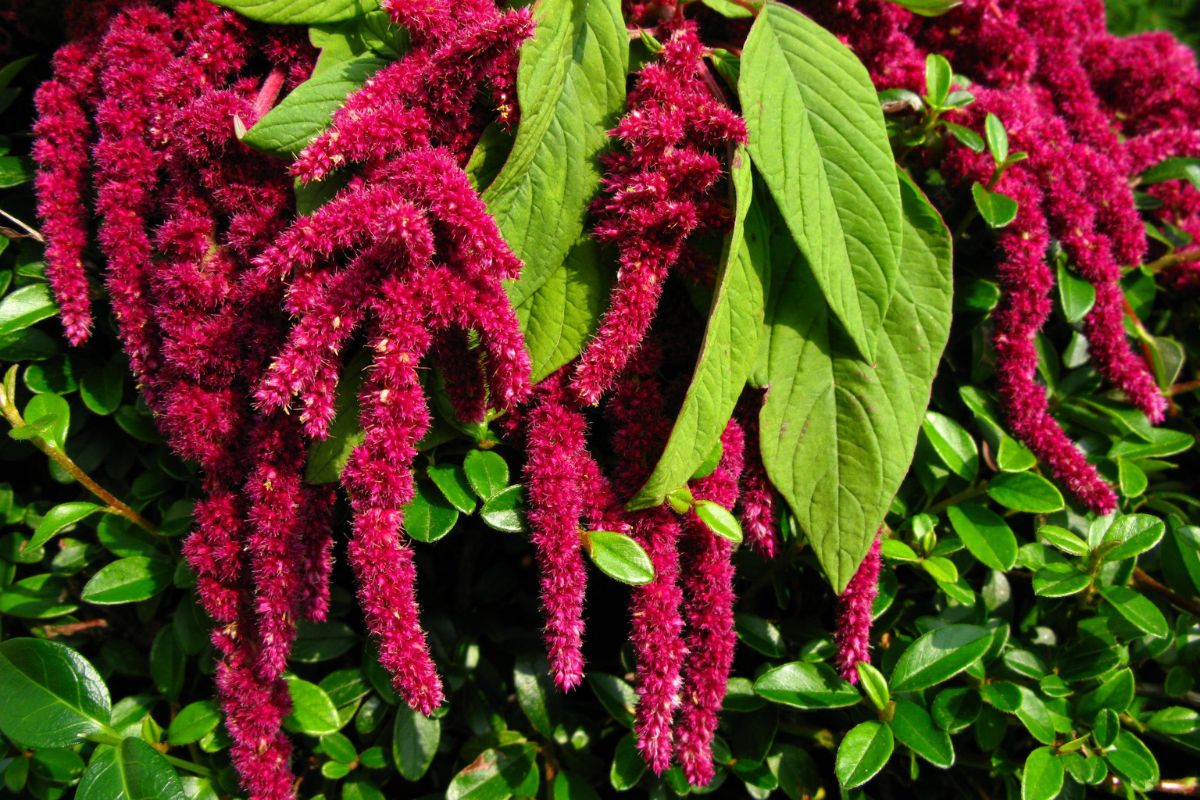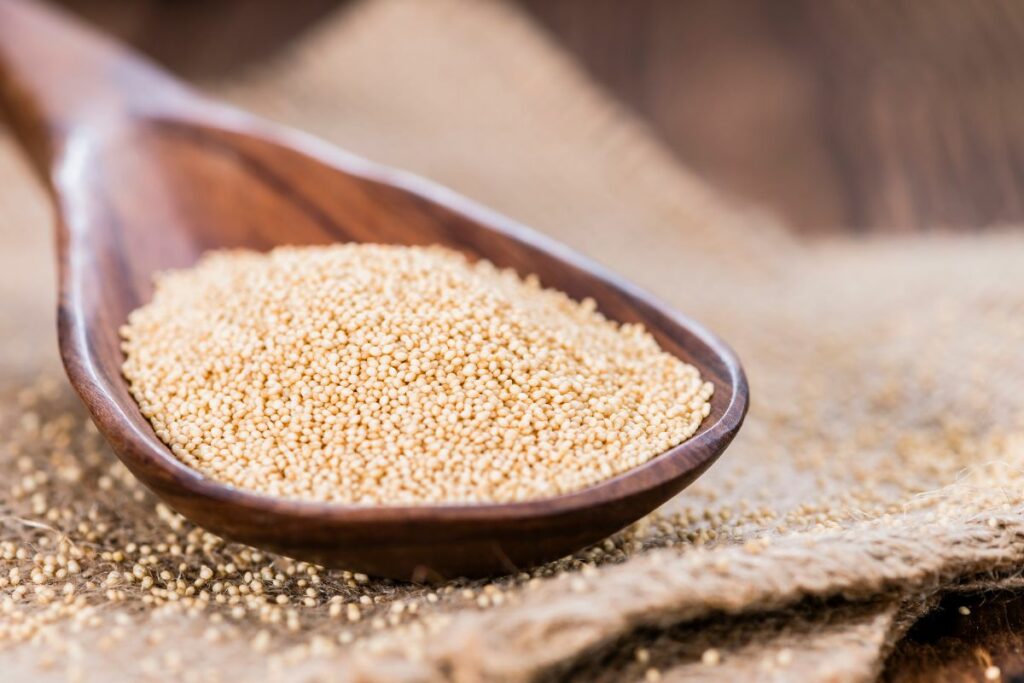Amaranth is a heat-tolerant crop that grows well in hot climates. In fact, it thrives in conditions where most plants wilt away. You can grow amaranth in areas like California, Florida, Texas, Arizona, New Mexico, Hawaii, Puerto Rico, and even parts of Canada.
The plant is easy to grow and requires little maintenance. It does best in full sun, though some varieties do better in partial shade.
Amaranth needs about six hours of sunlight each day. If you live in a place with extreme weather, you might want to consider growing amaranth in containers.
You can harvest amaranth throughout the season, but it’s especially good during the fall and winter months. Harvesting amaranth leaves is simple: just cut off the entire head, roots included.
Then wash the leaves thoroughly and use them in salads, soups, stews, stir fries, and smoothies.
What Exactly Is Amaranth?
Amaranth is a grain native to Mexico and Central America. Its name derives from the Spanish word “amarante,” meaning “immortal.” In fact, the plant has been cultivated since pre-Columbian times.
The seeds are small, round, and greenish yellow in color. They’re often used as a substitute for quinoa because they cook up similarly.
Like quinoa, amaranth contains protein and fiber, along with essential amino acids like lysine, methionine, cystine, tryptophan, and tyrosine.
It’s also rich in iron, magnesium, phosphorus, potassium, copper, zinc, selenium, vitamin B6, folate, niacin, riboflavin, thiamin, pantothenic acid, biotin, and choline.
Unlike quinoa, however, amaranth doesn’t contain gluten so is ideal for a celiac diet.
Growing
The plant grows well in most soils, including clay, sandy loam, and heavy clay. As mentioned, Amaranth prefers full sun but tolerates partial shade. It does best in moist soil with good drainage.
When planting, make sure you choose a location that receives plenty of sunshine. Amaranth is very sensitive to cold temperatures and frost. Plant in early spring or late summer, just before the ground thaws.
You can sow seeds directly into the garden or start indoors under lights. When sowing outdoors, cover the seed lightly with fine sand or compost and water thoroughly. Cover again once the weather turns warm.
Harvesting is simple. Simply bend the flowering stalk over a container and shake off the mature seeds.
Some people like to pick the seeds off the stalk while it is still attached to the plant. This method works well for small quantities, but it takes longer.
To speed up the harvest process, cut the stem close to the base of the plant. Then, tie the stem together with string or rubber bands.
Hang the bundle upside down in a dry place away from direct light. After several days, the seeds will drop onto the floor. Gather the seeds and store them in airtight containers.
Water And Humidity
Amaranth is a drought tolerant crop that grows well in dry climates. This makes it ideal for areas where there is little rainfall during the growing season.
However, it is important to know how much moisture your plants require. Watering too often or too deeply can cause root rot, while insufficient water causes stunted growth and poor yields.
If you live in a humid climate, you may find that your plants do not need to be watered as frequently.
You will want to keep the soils moist, and once plants reach about 2-4 inches tall, you can water 1-3 times per week. When you water, try to avoid wetting leaves and flowers.
Directly apply water toward the base of the plant near the roots, using a soaker hose, drip irrigation system, or a sprinkler.
Do not use overhead sprays because they tend to splash onto foliage and flowers. Amaranth is very sensitive to overwatering, especially when it is young.
Threshing And Winnowing
Once the heads are ripe, thresh them over clean sheets or into large paper bags. Use a gloved hand to remove any remaining chaff from the heads.
Sift out the smaller particles of chaff with a colander or piece of screen.
Toss the cleaned heads into a container with a fan set on low, adjust the fan as desired. As you toss, lighter chaff will rise to the top and be blown away. Repeat until no chaff remains.
Novice gardeners should start by laying out a clean surface before planting their seeds.
Harvesting
The seeds themselves are tiny, about the size of poppy seeds, and look like little black beads. They’re easy to sow directly into the ground, though you’ll want to wait until the soil warms up again before doing so.
Once planted, amaranth grows quickly, producing seedlings in just under a month. Once the plants reach about 4 inches (ca. 10 cm) tall, you can begin harvesting the leaves.
You don’t want to pull them out too early, however; otherwise, the plant won’t recover well. Instead, gently tug on the stem, pulling off the leaf without damaging the plant.
This technique works best if you pick the outer leaves first, since the center of the plant tends to be tougher.
You can eat the leaves raw, steamed, sautéed, or even added to stews and soups. They’re especially good with green smoothies and juices.

Why Grow Amaranth?
Amaranth is a leafy green vegetable native to Mexico and Central America and is often confused with quinoa, another grain-like plant.
However, amaranth contains much more protein than quinoa, and it grows quickly. In fact, it’s one of the fastest growing plants known.
The leaves of amaranth are packed with nutrients. One cup of chopped leaves provides about 50% of the daily value of vitamin A, 20% of vitamin K, 25% of vitamin B6, 30% of vitamin C, and 15% of folate.
Amaranth is also rich in iron, magnesium, manganese, phosphorus, potassium, copper, thiamin, riboflavin, niacin, pantothenic acid, and dietary fiber.
As well as being highly nutritious, Amaranth also produces beautiful flowers.
Growing For Seed
Growing amaranth for its edible seeds is simple. Simply sow the seeds directly into rows spaced 30 inches (0.76 m) apart.
Keep the soil moist throughout the season and harvest when the heads turn yellow.
If you live in a cold climate, you may want to cover the plants with row covers to protect them from insects and birds.
Harvesting For Flowers
Amaranth blooms are usually harvested when they are three quarters open and still intact and firm. You can tell if a bloom is ready because it will begin to turn yellowish green.
Once you see this color change, pick it carefully. Don’t pull too hard or else you might damage the stem. Also, don’t let the petals fall off. This will make picking easier.
When the flowers are past their peak, they will become drier, lighter in appearance, and start to drop seed and pieces of chaff, making them less attractive.
To avoid this, wait until the flowers are just beginning to show signs of decline.
Once you’ve chosen the perfect bloom, put it into a vase filled with water. Keep it out of direct sunlight and away from drafts. Place the vase somewhere warm, like near a heater or radiator.
Check the water level every day. Change the water when necessary. Remove dead leaves and debris from around the base of the plant.
Conclusion
Growing amaranth is easy and rewarding. It’s an excellent choice for beginners who want to grow something new and different.
And, unlike many other vegetables, amaranth doesn’t require a lot of space. So, if you have limited garden space, consider planting some amaranth.








